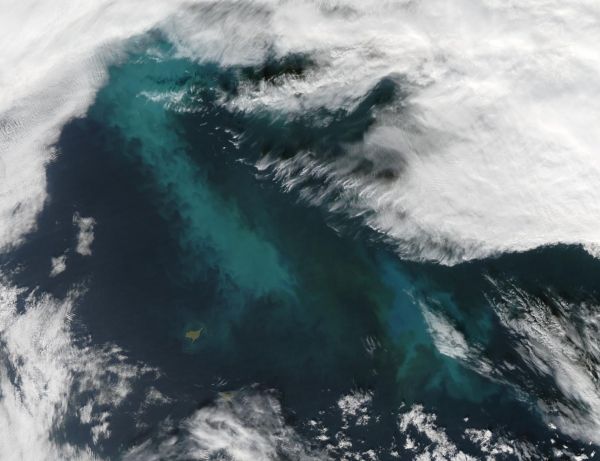New research finds Arctic Ocean currents and storms are moving bacteria from ocean algae blooms into the atmosphere where the particles help clouds form. These particles, which are biological in origin, can affect weather patterns throughout the world, according to the new study in the AGU journal Geophysical Research Letters.
Particles suspended in air called aerosols can sometimes accelerate ice crystal formation in clouds, impacting weather climate and weather patterns. Such ice-nucleating particles include dust, smoke, pollen, fungi and bacteria. Previous research had shown marine bacteria were seeding clouds in the Arctic, but how they got from the ocean to the clouds was a mystery.
In the new study, the researchers took samples of water and air in the Bering Strait, and tested the samples for the presence of biological ice nucleating particles. Bacteria normally found near the sea floor was present in the air above the ocean surface, suggesting ocean currents and turmoil help make the bacteria airborne.
Read more at: American Geophysical Union
This is a 2009 phytoplankton bloom in the Bering Sea. Cloud seed bacteria may feed on phytoplankton. (Photo Credit: NASA, Jeff Schmaltz, MODIS Rapid Response Team, Goddard Space Flight Center)


